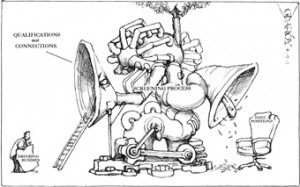Court upside down
IN THE Sandiganbayan resolution, also promulgated on May 9, which dismissed the Motion to Intervene in the Carlos Garcia plea-bargain case filed by the Office of the Solicitor General, the anti-graft court’s Second Division intoned: “While the Court is used to be [sic] at the center of conflicting interests, and to be the object of criticism from the losing parties, we have never seen such distortions and prevarications of the facts from people who are expected to be the sentinels of the rule of law.”
Unfortunately for the anti-corruption constituency that helped elect the second Aquino administration, the Sandiganbayan was not referring to the special prosecutors under then-Ombudsman Merceditas Gutierrez, who botched the open-and-shut case against Garcia, but against the critics of the plea bargain and of the Court itself.
Sad but true. Even though Gutierrez and her special prosecutors came to admit under specific questioning in hearings at the Senate and the House of Representatives that they had missed certain evidence or did not follow certain leads, even though it became clear to the lawyers in Congress and to the public at large that certain distortions and prevarications marked the Ombudsman’s entire effort to bring Garcia to justice, even though Gutierrez herself said, under questioning from Sen. Franklin Drilon, that she would consider filing a motion to withdraw the plea bargain agreement in the light of the new evidence and the legal principles being invoked, the Sandiganbayan’s Second Division, speaking through Justice Samuel Martires, still found what it called the “critics” of the plea bargain agreement to be in the wrong, declaring: “We must not be swayed by a public opinion which, no matter how valid and sincere the sentiments may be, is expressed in terms of emotions, if not, from a limited perception and a shallow appreciation of the facts.”
This sounds impressive, but in fact it is completely perverse, because the true adversary of the anti-graft court is not public opinion but graft and corruption. To see the judges wring their hands and then whine, “In fact, we were also amazed at the amount of money that the accused and his family own,” is to witness official inutility. Unexplained wealth of government personnel is prima facie evidence of corruption.
Worse, the justices rationalize their inutility in a way that explains why the corrupt continue to hold sway in the country. “As we have intimated above, we are aware of the existence of a big amount of money in the possession of the accused. But where these sums of money came from was not shown and explained.” Judges living in a vacuum may think that bribes are exchanged with the use of official receipts and record books which government prosecutors must track down, but everyone else knows it is the military general earning a five-digit salary per month but enjoying hundreds of millions in assets who must do the explaining.
To punctuate their discussion of the lack of evidence to determine Garcia’s guilt, the judges said: “It is worth emphasizing that the only evidence which the prosecution has leaned on to prove the predicate crimes is the handwritten letter and sworn statement of Clarita Garcia and the testimony of Heidi Mendoza.” Exactly. Public opinion on the case, which the judges seem to think so little of, is based also on these two sets of evidence; the public just has a different appreciation of their value.
After all, what should the anti-graft court make of Clarita’s confession, made voluntarily and in all candor and innocence before a US official, which described a breathtaking pattern of direct bribery? Surely the public is not wrong to think that Clarita’s confession damns Garcia and his entire family.
What should the court make of Mendoza’s testimony, which described a pattern of official laxity and untold opportunity for graft? Surely the public is not wrong to think that Mendoza’s painstaking audit deepens the guilt of Garcia et al.
This, then, is the real problem: What is the public to make of the Sandiganbayan’s perplexing decision? The issue is not, and has never been, about popularity. It has always been about accountability, about bringing corruption to light and the corrupt to justice. Hiding behind stirring statements expressing independence from public pressure, the justices profess their fealty to duty and the rule of law. In truth, they only deepened public frustration with the fight against corruption.





















